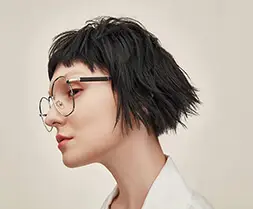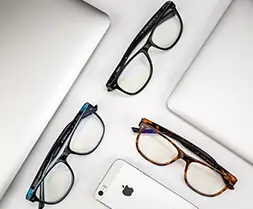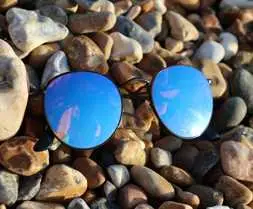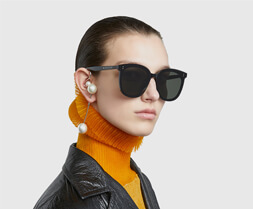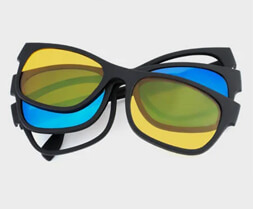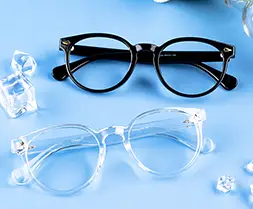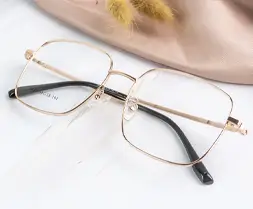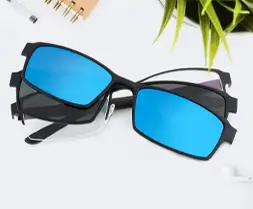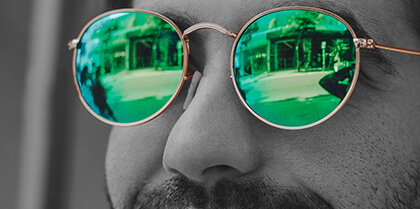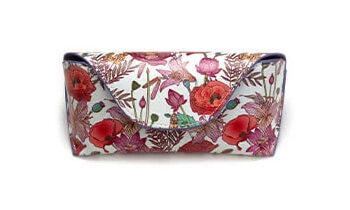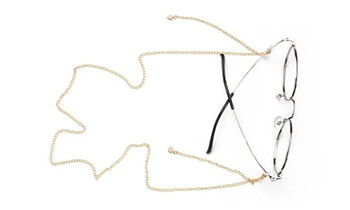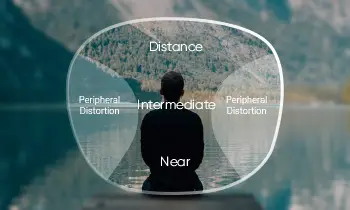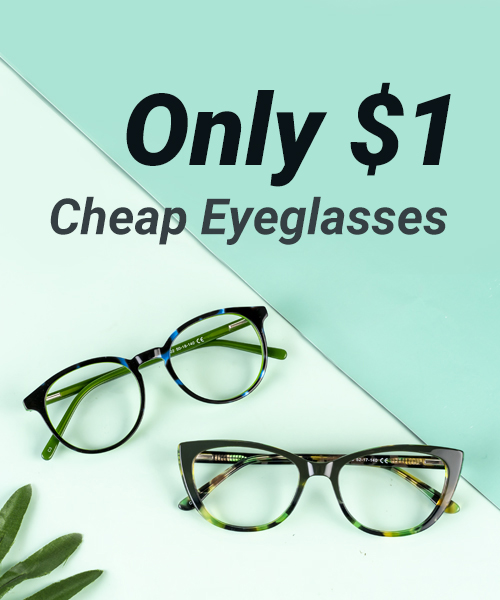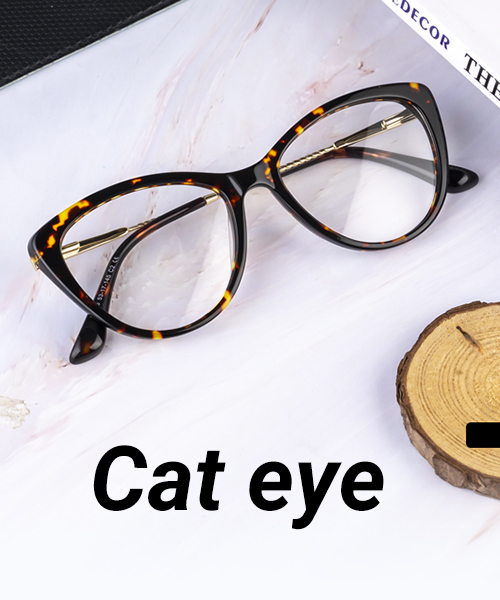Summer is here, and in addition to the hot weather, blinding sunlight is also very people's headache. Some people almost had a car accident because of the sun shining in their eyes. Wearing sunglasses can solve the problem of harsh sunlight, though! Unfortunately! Many people's eyes are moderately nearsighted and can barely distinguish between humans or animals from 50 meters away.
In addition, UV rays from the sun are very penetrating and can penetrate the cornea and reach the lens. Long-term exposure to UV light will lead to aging and clouding of the lens, causing keratoconus and retinal macular degeneration and significantly increasing the chance of cataracts.
The summer sun can be a real headache! After doing a lot of preparation, we recommend it the savior of summer - Light-adjusting lenses (photochromic glasses)!
Photochromic Lenses
Light-adjusting lenses are divided into two types of lenses: un-coated light-adjusting lenses ("base change") and coating light-adjusting lenses ("coating change"), depending on the part of the lens that changes color.
Un-coated Photochromic Lens
Un-coated photochromic lenses are made by adding silver halide chemicals to the lens material, using the ionic reaction of silver halide, which decomposes into silver and halogen when stimulated by strong light to color the lens, and then combines into silver halide when the light becomes weaker, and the color becomes lighter. Glass photochromic lenses are mostly made with this technology.
Coating Photochromic Lens
Coating photochromic lenses, on the other hand, are specially treated in the lens coating process. For example, spiro-pyran compounds are used to spin-coat the surface of the lenses at high speed, using the molecular structure itself to reverse the opening and closing to achieve the effect of passing or blocking light, depending on the intensity of light and UV rays.
Benefits of photochromic lenses and suitable people
Wearing photochromic glasses has many benefits
Regular photochromic glasses are not harmful to vision. While general nearsighted lenses only serve the purpose of correcting vision, photochromic glasses not only correct vision but also resist UV damage to the eyes at the same time. Many eye diseases, such as macular degeneration, pterygium, senile cataracts, and other eye diseases that are more age-related, and are directly related to UV exposure, so photochromic glasses can protect the eyes to some extent.

The girl wearing glasses with photochromic lenses in gray
Compared to ordinary sunglasses, photochromic glasses have two better benefits. One is that photochromic glasses to the darkness of the natural color lighter so as to prevent people from wearing sunglasses indoors on the eyes; at the same time, the eyes encounter strong light, which will instinctively narrow the pupil to reduce the entry of ultraviolet light, wearing no UV protection function of ordinary sunglasses, due to reduced light transmission, the eyes will not have this instinctive reaction, allowing ultraviolet light to enter, thus harming the eyes.
Photochromic glasses are not for everyone
Although there are many benefits to wearing photochromic glasses, children under the age of 6 and middle-aged and older people over the age of 45 should wear them sparingly. This is because the eyes of young children are still in the developmental stage, especially children under the age of 6. The visual function is not yet mature, and this developmental process requires constant stimulation from natural light.
Middle-aged and elderly people over 45 years old because as they grow older, the eyes are slowly declining in their ability to adjust their vision, and the elderly have more adequate requirements for light, and bright light will make the color of the varicose lenses deepen. After the color of the lens becomes darker, the eyes will naturally dilate the pupil in order to see clearly, which will cause the narrowing of the anterior chamber angle of the eye and poor drainage of atrial fluid, which will easily induce glaucoma over time. Therefore, photochromic glasses are not suitable for all myopic patients.
Why do photochromic glasses change color even though it's cloudy?
The key to the color change of photochromic lenses depends on UV rays, and UV rays are everywhere! Whether it is sunny, cloudy, rainy, or even indoors with glass, UV rays may not be completely blocked; therefore, the effect of tinting may vary in shades depending on the amount of UV rays received in the environment.
Photochromic lenses are lenses with automatic light intensity adjustment, which automatically adjust the color temperature and color of the lenses according to the intensity of the ambient light. Photochromic lenses provide a better visual experience and are suitable for use in different light conditions.
Why are graying photochromic lenses the most common on the market?
Gray lenses absorb infrared rays and 98% of UV rays. The greatest advantage of gray lenses is that they do not change the original color of the scene due to the lenses, and, most satisfyingly, they reduce the intensity of light very effectively. The gray lenses absorb all color spectrums in a balanced way so that the scene is only darkened but without significant chromatic aberration, revealing a real and natural feeling. Gray is a neutral color, suitable for all people.
Points to note when choosing photochromic lenses
If you want to buy photochromic lenses, you should pay attention to the following points:
1. If the difference between the two eyes is more than 100 degrees, it is recommended to choose the coating photochromic lenses, not because the thickness of the two lenses is different, resulting in different shades of lens discoloration.
2. If one of the photochromic lenses worn for more than one year is damaged and needs to be replaced, it is recommended that both lenses be replaced together, as the two lenses will not have the same tinting effect due to different usage times.
3. If there is high eye pressure or glaucoma patients, remember that they must not wear photochromic lenses or sunglasses.


